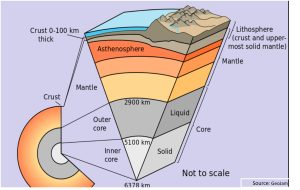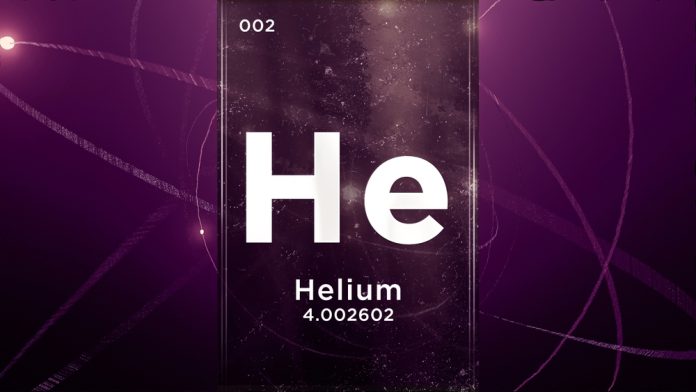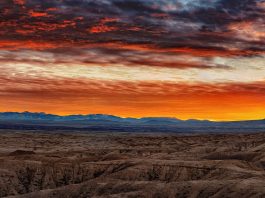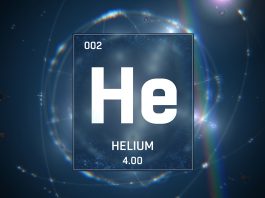For followers of the nascent and ‘noble’ helium industry, significant quantifiable data has been assembled characterising the critical exploration facet of seal capacity.
This is not the case, however, for helium sourcing. Voluminous data derived from the drill bit (up to 17,000’ deep) and seismic surveys have quantified the approximate thickness and trapping integrity of multiple sealing lithologies (e.g., evaporitic salts and anhydrite).
On the other hand, the generation of helium can occur in data-starved depths greater than 50 miles (80 km).
Therefore, when helium explorationists are chasing large, deeply buried structural or stratigraphic traps capable of making a dent in North America’s ever-growing helium needs, accurate models for estimating sufficient helium sourcing becomes imperative in justifying the high capital exposure for drilling large structures overlain by thick, helium trapping, salts and anhydrite.
Mantle versus crustal gases
There is a general consensus amongst North American helium explorationists that helium sourcing is directly linked to the radioactive decay of uranium and thorium in crustal rock (6 to 50 miles deep). It’s been proposed that plutons of relatively shallow felsic crystalline basement rock (e.g., Colorado Plateau) – an excellent host rock for uranium and thorium minerals – are widely distributed throughout many helium-bearing basins.

Isotopes plus gas inclusions in mantle xenoliths are commonly used to fingerprint deeply buried gases in these same basins. While many authors have used these data sources to infer crustal derivation for helium, there is a paradigm shift emerging: could the dominate origin for helium be associated with mantle rocks sourced from the lower lithosphere or deeper1.
As part of a 10 MM acre study of the southeastern quadrant of the Colorado Plateau, Four Corners Helium, LLC has determined Kinder Morgans Doe Canyon Field in southwestern Colorado is projected to produce almost 4 BCF of helium from an area of less than 15 square miles. Why are there very few areas in North America that can make this claim?
The answer could be in the upper mantle.
Helium sourcing in the upper mantle
Rico Hot Springs is approximately 40 miles due east of Doe Canyon Field and on the eastern edge of the evaporitic Akah formation.
Detailed geochemical analysis has proven that the gases bubbling from the spring are mantle-derived (He3/He4 ratios of ~8). This little-known fact constitutes a smoking gun for this potential shift in reasoning.
It is thus hypothesised that a partially melted thick slab of 1800-1400 Ma Proterozoic crust and lithospheric mantle became upwelling mantle magmas over time – degassing and then undergoing millions of years of radioactive decay. Research has identified that these mafic magmas have an unusually high concentration of uranium and thorium2.
By combining these high concentrations, massive volumes of Proterozoic lithospheric mantle, and deep fractures, the material balancing act plausibly establishes inordinately high volumes of helium in post-Precambrian sedimentary rocks.
Capping the story is HEAT. The Four Corners region has some of the highest thermal signatures in the United States and has been interpreted to be caused by cooling mantle magmas at depth.
This factor helps to explain the 9 trillion cubic feet of CO2 produced from SW Colorado’s McElmo Dome Field, with another 6-8 trillion cubic feet still to be produced.
The end game
Ideally, Tier 1 and Tier 2 industrial gas companies prefer intermediate and long-term helium contracts. Qatar and Russia have this capability in spades.
Specifically, Qatar’s enormous North Field, and Eastern Siberia’s extensive Kovykta and Yurubchen-Tokohomo fields are fully capable of adding significant and sustainable volumes of helium to the world stage in the next few years.
However, considering Qatar’s tortuous 12,500-mile tanker route to the United States (to avoid the precarious Red Sea) and the US looking at placing tariffs on Russian helium (a 35% tariff has been recently proposed by Senators Bob Casey and John Fetterman), North American helium explorers need to show-off their inbred entrepreneurism and work towards guaranteeing large and dependable supplies of helium to its helium-hungry citizenry (North America consumes almost one-third of the entire World’s helium supply).
This brings us back to sizable North American structural and/or stratigraphic traps linked to expansive volumes of helium source rock.
It’s relatively unlikely that another Hugoton or LaBarge Field will be in North America’s future, but Blue Spruces offset to LaBarge field, and projects analogous to Doe Canyon field (SW Colorado and SE Utah) have the greatest chance of keeping North America a net exporter of helium.
Stay vigilant and stay tuned.
References
- Jalowitzki, T., Sumino, H., Conceicao, R.V. et al., 2024
- Gonzales and Lake, 2017









